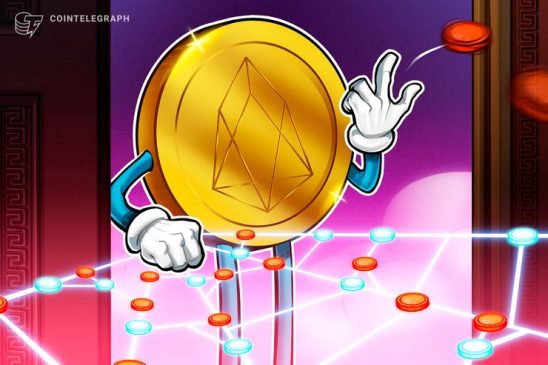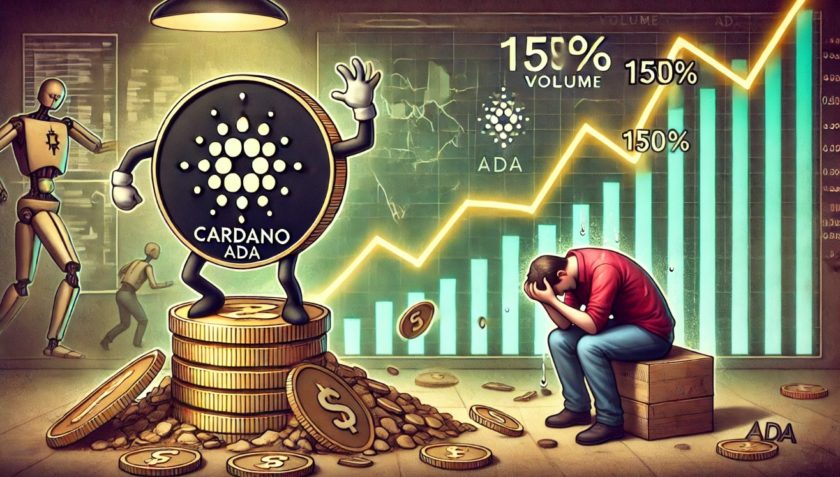Recently, Blockchain protocol EOS became subject of a new scandal: its governance model was questioned, as evidence showing a moderator reversing transactions which had already been confirmed surfaced on Reddit.
Crypto community was triggered once again, but perhaps it is time to face it: EOS is not really decentralized. At least it is isn’t what EOS “is after”, in the words of its co-founder Daniel Larimer.
What is EOS and how it works?
EOS.io is a blockchain-powered smart contracts protocol for the development, hosting, and execution of decentralized applications (dApps). It was launched in June 2018 as open-source software, while first test nets and the original whitepaper emerged earlier in 2017. The platform was developed by block.one, a startup registered in the Cayman Islands and lead by Daniel Larimer and Brendan Blumer.
EOS holds the absolute record in terms of funds raised during initial coin offerings (ICOs): it has managed to gather around $4.1 billion worth of investments, or roughly 7.12 million Ethereum (ETH), after fundraising for nearly a year. The number remains unmatched to date.
The protocol is supported by the native cryptocurrency EOS, currently the sixth largest crypto by total market cap. Those tokens can be staked for using network resources either for personal use or leased out for developers use — as per the project’s whitepaper, dApp developers can build their product on the top of the EOS.io protocol and make use of its servers, bandwidth and computational power, as those resources are distributed equally among EOS holders. Basically, EOS.io attempts to represent a decentralized alternative to cloud hosting services.
EOS employs a consensus model called Delegated Proof-of-Stake (DPOS). That means that its investors are rewarded with voting power and decide who gets to mine the EOS blockchain.
Thus, the EOS ecosystem rests upon at least two major entities — the EOS Core Arbitration Forum (ECAF), effectively its ‘judicial branch,’ and Block Producers (BPs), who produce blocks on the EOS blockchain — just like miners do within the Bitcoin’s (BTC) blockchain.
BPs earn EOS tokens produced by inflation — according to some estimations, top three EOS BPs obtain around 1000 tokens per day. They are elected through the constant voting process, and their number is capped at 21 — consequently, the top is fluid, and BP candidates who earn enough votes can replace the BPs in power any minute.
Decentralization supporters’ nightmare: EOS reverses previously-confirmed transactions
On November 11, a screenshot showing a ECAF moderator reversing transactions which had already been confirmed, was posted on Reddit, and gathered hundreds of comments.
According to Reddit user u/auti9003, a dispute allegedly involving a phished EOS account was referred to one of the platform’s “arbitrators” Ben Gates, who decided to reverse transactions that happened without the owner’s permission. This, the user noted, involved undoing transactions which had already received network confirmations — most of cryptocurrencies would require a hard fork for that (like Ethereum with DAO), but EOS relies on a more flexible model.
Summarizing, the arbitrator referred to the EOS constitution as a basis for the decision. He wrote:
“Under the powers afforded to me as arbitrator under article 6 of the Rules of Dispute Resolution, I, Ben Gates, rule that the EOS account in dispute should be returned to the claimant with immediate effect and that the freeze over the assets within the said account is removed.”
That move outraged decentralization maximalists, as Reddit responses mostly claimed that EOS had failed to prove its use case versus other more traditional centralized structures.
“Why would anyone use this over a bank account and traditional legal system?” the most popular comment reads, adding:
“These guys raised ($4 billion) to recreate the legal system using a token that is neither censorship resistant, nor immutable.”
Is EOS even trying to be decentralized?
EOS’ model of governance has attracted controversy before: for instance, in early October, allegations arose accusing the platform’s major Block Producers (BPs), including Chinese crypto exchange Huobi, of “mutual voting” and “collusion.”
Essentially, an alleged leaked Huobi spreadsheet suggested that main EOS nodes were involved in mutual voting along with pay-offs to remain in power of the EOS blockchain and keep their profits.
Soon after, Block.one, the developer of EOS, published a statement, saying it was “aware of some unverified claims regarding irregular block producer voting, and the subsequent denials of those claims.” Nevertheless, there was no further update on the matter, while Huobi remains EOS’ top BP as of press time.
Further, in June, an even bigger scandal occurred, when EOS BPs overrode an ECAF decision and froze seven accounts associated with phishing scams after the arbitration body failed to promptly come up with a response. The ECAF later retroactively ordered the accounts frozen, but the BP conference call-based decision caused some to question EOS’ decentralized system, and to label the move as ‘power abuse.’
Less than a week after, another ECAF order to stop processing transactions involving 27 more addresses surfaced. Interestingly, it lacked any explanation for blocking the addresses, promising to do so on a later date.
That attracted another round of harsh criticism from the crypto crowd, and, after an apparent fake ECAF order began to circulate on social media sever days later, some BPs, notably EOS New York, announced that they would suspend execution of any such orders, as they couldn’t’ tell if they were legitimate. Yet again, the ECAF and BPs struggled to coordinate their action, and that many decisions on EOS blockchain were handled by centralized entities.
On November 1, more detailed and grounded criticism of EOS’ governance model arrived, as blockchain testing company Whiteblock published results of “the first independent benchmark testing of the EOS software.” Essentially, the investigation came to several conclusions about the EOS, the most bold of which was that “EOS is not a blockchain,” but “rather a distributed homogeneous database management system,” because its transactions were reportedly “not cryptographically validated.”
Additionally, the research results showed inaccuracies in performance claims. In July, EOS’ chief technology officer Daniel Larimer tweeted that EOS was performing 2351 transactions per second (Ethereum, for comparison, can process around 15). The Whiteblock report, however, showed that with “real world conditions” of round trip latency and 0.01 percent packet loss, EOS performance was below 50 TPS, “putting the system in close proximity to the performance that exists in Ethereum.”
Thus, the investigation concluded that “the foundation of the EOS system is built on a flawed model that is not truly decentralized.” Later, on November 6, the EOS Alliance, a non-profit organization formed by EOS community members and block producers with the role to “facilitate the dialogue within community,” published a response signed by its Interim Executive Director Thomas Cox. Dubbed “Yes, EOS is a blockchain,” it criticized Whiteblock’s “provocative paper,” noting that the benchmarking firm “only recruited Ethereum folks for the project.”
Still, EOS’ chief technology officer Daniel Larimer confirms that his company does not aim to be decentralized. In an interview with YouTube blog “Colin Talks Crypto” aired on October 3, Larimer clarified his vision:
“Decentralization isn’t what we’re after. What we’re after is anti-censorship and robustness against being shut down.”
Nevertheless, Larimer added that his project was still more decentralized than Bitcoin and Ethereum, because it takes 11 BPs to control the majority of EOS network, while BTC and ETH relied 4 and 3 pools respectively.




